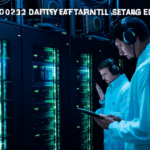“`html
A Beginner’s Guide to Getting Involved in Exciting Open Source Projects
Introduction
Open source refers to software whose source code is made available under a license that permits users to study, change, and distribute the software to anyone and for any purpose. This model fosters collaboration, innovation, and transparency, making it a cornerstone of modern technology.
Participating in open source projects offers numerous benefits. It provides an excellent opportunity to learn new skills, network with like-minded individuals, and build a portfolio that can enhance your career prospects. Whether you’re a student, professional, or hobbyist, open source projects offer a platform to grow both personally and professionally.
Understanding Open Source Projects
Before diving into open source, it’s important to understand some key terms:
- Fork: A copy of a repository that you can modify independently.
- Pull Request: A proposed change to a repository that others can review and merge.
- Issue: A problem or suggestion reported by users or contributors.
- Repository: A place where project files and history are stored.
Open source projects are governed by various licenses, such as MIT, GPL, and Apache. These licenses dictate how the software can be used, modified, and distributed. Familiarizing yourself with these licenses will help you understand the legal framework within which you’re working.
Open source communities are collaborative environments where developers, designers, and enthusiasts come together to contribute to shared goals. Engaging with these communities is crucial for learning and growth.
Finding the Right Project
Choosing the right project is vital for a successful open source journey. Start by identifying areas of interest and aligning them with your skills. For example, if you’re interested in web development, look for projects related to front-end or back-end technologies.
Platforms like GitHub, GitLab, and Bitbucket are excellent places to discover projects. Use search filters to narrow down options based on language, license, and activity level. Additionally, consider projects with active communities and clear contribution guidelines to ensure a smooth onboarding process.
Evaluating a project’s community and activity level is crucial. Look for frequent updates, active discussions, and a welcoming atmosphere. This will make it easier to integrate and contribute meaningfully.
Getting Started with Your First Contribution
To begin contributing, you’ll need to set up your development environment. Install Git, a version control system, and create a GitHub account. Follow the official documentation to configure Git and connect it to GitHub.
Your first contribution could be something simple, like fixing typos, improving documentation, or reporting bugs. To submit your changes, follow these steps:
- Fork the repository to your own GitHub account.
- Create a branch for your changes.
- Make your modifications and commit them.
- Push your branch to your forked repository.
- Submit a pull request to the original repository.
Address common issues, such as ensuring your code adheres to the project’s coding standards and passing all tests. Submitting patches is a great way to start and gain confidence in your abilities.
Becoming an Active Contributor
Engaging with the community is key to becoming an active contributor. Attend meetups, join mailing lists, and participate in discussions. This will help you stay informed and connected with other contributors.
Once you’ve gained some experience, look for opportunities to make more significant contributions. This could involve implementing new features, refactoring code, or optimizing performance. Seek feedback from experienced contributors to improve your skills.
Increase your visibility within the community by writing blog posts about your experiences or giving talks at conferences. Sharing your knowledge can inspire others and solidify your reputation as a valuable contributor.
Growing as a Contributor
Transitioning from a beginner to an advanced contributor requires continuous learning and dedication. Explore resources such as books, online courses, and podcasts to deepen your understanding of programming and open source best practices.
Maintaining a positive attitude and resilience is crucial when facing challenges. Don’t be discouraged by setbacks; they are part of the learning process. Stay persistent and seek support from the community when needed.
As you grow, consider taking on leadership roles within the project, such as managing issues or reviewing pull requests. This will further enhance your skills and contribute to the project’s success.
Conclusion
Getting involved in open source projects is a rewarding experience that can significantly impact your career and personal growth. By following this guide, you can navigate the complexities of open source and make meaningful contributions.
Remember, the open source community thrives on collaboration and mutual support. Embrace the opportunities it offers, and you’ll find yourself not only contributing but also gaining invaluable experience and connections.
“`


